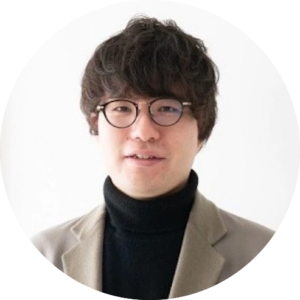Hearing For All
My mother has age-related hearing loss, which makes it difficult for her to hear conversations and music, especially in the high frequency range.
When I was a child, watching TV with my parents at home, my mother would turn up the volume of the TV so loud that we often fought over the TV volume setting.
On the other hand, recently when I was watching TV, my wife told me to turn down the TV volume because it was too loud, which I found strange because I had no intention of turning it up that loud myself.
So I took a hearing test and was very shocked to find that I could only hear high frequencies down to 13 KHz, which was already below the average audible range (about 15 KHz) for people in their 30s.
You can easily take a hearing test here, and I encourage everyone to try it.
Clearly, Inc. CEO, M.D.
Kazutaka Yoshinaga
The frightening thing about hearing is that you can lose your hearing without even realizing it.
And once hearing is diminished, it cannot be reversed with current medical technology.
In my case in particular, I often commuted to work or work with music playing in my ears with my AirPods, constantly streaming sound through the earphones, and I think this is what caused my hearing to deteriorate below average. This is what is known as “smartphone hearing loss”, which the WHO has been warning about recently. I have been listening to music with the volume turned up even higher, especially when the surroundings are noisy, such as on the subway, for the past 10 years or so, and it has been ruining my hearing.
The population of people with hearing loss continues to grow worldwide, partly due to smartphone hearing loss; according to the WHO, more than 1.5 billion people in the world today already have hearing loss, and this number is expected to increase to more than 2.5 billion people by 2050.
When I worked as a home physician, I sometimes visited and examined elderly patients in nursing homes.
During these visits, I often encountered elderly people who had television blaring from their rooms. Since not all rooms are fully soundproofed, we often received complaints from neighbors about the noise, which troubled both the residents and the facility staff.
So we developed a speaker that could deliver clear conversation and sound even when the TV volume was turned down. We achieved this by developing a special film that spreads sound in 360° directions, a proprietary patented technology.
Not only people with hearing loss but also healthy people can experience the sound quality difference from ordinary speakers. Because the sound is equally clear in all directions, the speakers can be used not only for television, but also for video calls, music, games speakers, and so on. It is also suitable for large spaces where you want to deliver sound over a greater distance (background music in cafes and restaurants, announcements at train stations and airports, disaster prevention speakers, and as speakers for lectures and presentations in large conference rooms).
We have also devised a sleek design that we hope everyone will like.
We hope everyone likes the transparent blue designed speaker.
Clearly, Inc. CEO, M.D.
Kazutaka Yoshinaga
Team
Our team is skilled in healthcare field and hardware development.

Kazutaka Yoshinaga
CEO, M.D.
Kazutaka is a medical doctor and also the former founder of a medical online questionnaire service “Melp”. Melp has been used in over 1500 hospitals in Japan and has the largest market share. He exited the company to JMDC, inc and is developing a speech-clarifying speaker as a serial entrepreneur.

Yusuke Tanabe
CTO
